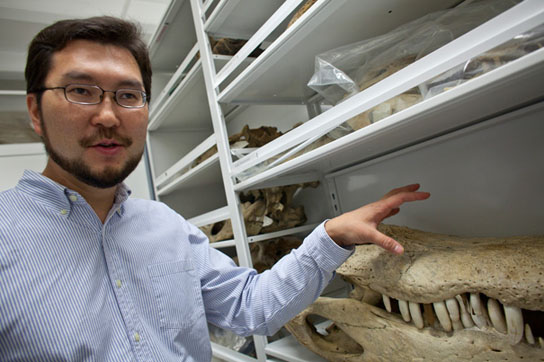
Harvard University Asst. Prof. of OEB Arkhat Abzhanov is examining the genetics of birds and alligators to find out clues to when the specific modifications that birds have may have arisen. He was photographed with Darwin Finches as well as in the Herpetology lab at the Museum of Comparative Zoology. Credit: Justin Ide/Harvard Staff Photographer
By analyzing fossil evidence from skeletons, eggs, and soft tissue of birdlike dinosaurs and primitive birds, a newly published study from Harvard scientists shows that birds are essentially living dinosaurs and provides an example of how developmental changes played a major role in the origin and evolution of birds.
It’s hard to see how a common house sparrow and a Tyrannosaurus Rex might have anything in common. One is a bird that weighs less than an ounce, the other a dinosaur that was the size of a school bus and tipped the scales at more than eight tons.
For all the differences, though, scientists now say that those two are more closely related than many believed. A new study led by Harvard scientists shows that birds are, essentially, living dinosaurs, with skulls that are remarkably similar to those of their juvenile ancestors.
As reported in a May 27 paper in the journal Nature, Arkhat Abzhanov, associate professor of organismic and evolutionary biology, and Bhart-Anjan Bhullar, a Ph.D. student in Abzhanov’s laboratory and the first author of the study, found evidence that the evolution of birds is the result of a drastic developmental change. Rather than take years to reach sexual maturity, as many dinosaurs did, birds sped up the clock — some species take as little as 12 weeks to mature — allowing them to retain the physical characteristics of baby dinosaurs.
“What is interesting about this research is the way it illustrates evolution as a developmental phenomenon,” Abzhanov said. “By changing the developmental biology in early species, nature has produced the modern bird — an entirely new creature — and one that, with approximately 10,000 species, is today the most successful group of land vertebrates on the planet.”
“The evolution of the many characteristics of birds — things like feathers, flight, and wishbones — has traditionally been a difficult problem for biologists,” Mark Norell, chair of the division of paleontology at the American Museum of Natural History and one of the paper’s co-authors, said. “By analyzing fossil evidence from skeletons, eggs, and soft tissue of birdlike dinosaurs and primitive birds, we’ve learned that birds are living theropod dinosaurs, a group of carnivorous animals that include the velociraptor. This new work advances our knowledge by providing a powerful example of how developmental changes played a major role in the origin and evolution of birds.”
While it’s clear simply from looking at the skulls of dinosaurs and modern birds that the creatures are vastly different — dinosaurs have distinctively long snouts and mouths bristling with teeth, while birds have proportionally larger eyes and brains — it was the realization that skulls of modern birds and juvenile dinosaurs show a surprising degree of similarity that sparked the study.
“No one had told the big story of the evolution of the bird head before,” Bhullar said. “There had been a number of smaller studies that focused on particular points of the anatomy, but no one had looked at the entire picture. What’s interesting is that when you do that, you see the origins of the features that make the bird head special lie deep in the history of the evolution of archosaurs, a group of animals that were the dominant meat-eating animals for millions of years.”
To tackle the problem, the researchers turned to an unusual methodology. Using CT scanners, they scanned dozens of skulls, ranging from modern birds to theropods — the dinosaurs most closely related to birds — to early dinosaur species. By marking various “landmarks” — such as the orbits and cranial cavity — on each scan, researchers were able to track how the skull changed shape over millions of years.
“We examined skulls from the entire lineage that gave rise to modern birds,” Abzhanov said. “We looked back approximately 250 million years, to the archosaurs, the group which gave rise to crocodiles and alligators as well as modern birds. Our goal was to look at these skulls to see how they changed, and try to understand what actually happened during the evolution of the bird skull.”
What Abzhanov and colleagues found was surprising — while early dinosaurs, even those closely related to modern birds, undergo vast morphological changes as they mature, the skulls of juvenile and adult birds remain remarkably similar.
“This phenomenon, where a change in the developmental timing of a creature produces morphological changes, is called heterochrony, and paedomorphosis is one example of it,” Abzhanov explained. “In the case of birds, we can see that the adults of a species look increasingly like the juveniles of their ancestors.”
In the case of modern birds, he said, the change is the result of a process known as progenesis, which speeds up an animal’s sexual development. Unlike their dinosaurian ancestors, modern birds take dramatically less time — just 12 weeks in some species — to reach maturity, allowing birds to retain the characteristics of their juvenile ancestors into adulthood.
Ultimately, Abzhanov said, the way the bird skull evolved — through changes in the developmental timeline — highlights the diversity of evolutionary strategies that have been used over millions of years.
“That you can have such dramatic success simply by changing the relative timing of events in a creature’s development is remarkable,” he said. “We now understand the relationship between birds and dinosaurs that much better, and we can say that, when we look at birds, we are actually looking at juvenile dinosaurs.”
Reference: “Birds have paedomorphic dinosaur skulls” by Bhart-Anjan S. Bhullar, Jesús Marugán-Lobón, Fernando Racimo, Gabe S. Bever, Timothy B. Rowe, Mark A. Norell and Arhat Abzhanov, 27 May 2012, Nature.
DOI: 10.1038/nature11146

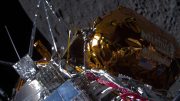
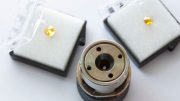

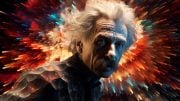

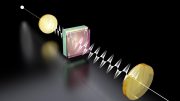
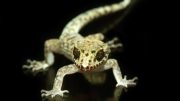

I like what Robin and Honey Badger have to say on this topic:
“Originating from an ancestor is not the same as being that ancestor. Evolution is about one organism evolving from another, not one organism remaining another.”
For example, snakes evolved from primitive lizards but it would be absurd to claim that snakes are lizards.
This research begs to be related to another about the role of epigenetics, Darwin’s thoughts on the origin of species, and the process of embryological recapitulation of successive species characteristics in the prenatal development of human beings. The presence of residual tails on some newborn human infants (ordinarily surgically removed) is one external piece of evidence pointing to the process of evolution alluded to by EnviroNut.
With not one transitional species and no fossil record to support the claims of evolution the science behind it does not hold up even in the slightest. At best it might be a good hypothesis but sound science is not based on best guesses. But wait someday we will find the missing link and the fossils that support millions of years of evolution.
What you don’t seem to understand is that species are neither fixed nor immutable. A population of a species, under changing environmental conditions (selection pressures) retain adaptations that help the population survive better. As the selection pressures are always changing, populations are already changing. When an isolated population retains significant number of adaptations (in appearance, behavior, diet, reproductive preferences or restrictions, etc) we humans would arbitrarily call them a new species.
One can observe this process in real time, just as Darwin did with the finches on Galapagos. People who keep their eyes tightly closed, with fingers firmly wedged in their ears yelling “goddidit, goddidit” are willfully blind, and will never be able to see the evidence.
Evolution is a religion and a false one at that. Watch this video. You’ll see.
https://m.youtube.com/watch?v=c1ufK04tjOI
You’ve been indoctrinated. Most are unable to see what is real and what is not. Most people think the dirt they are standing one is “realet’ than the power of the Trinity. Here, read this:
https://drive.protonmail.com/urls/0DZFQZ7V0M#tx7yxQheww2Z
Yeah, because one nut posted a rant on YouTube, all science must be wrong.
PS: Proton Mail? Dude…